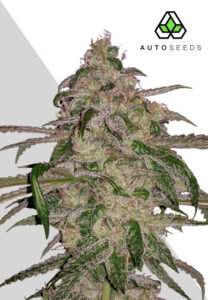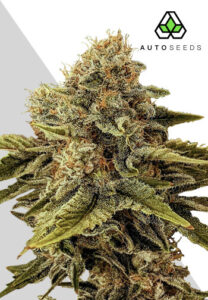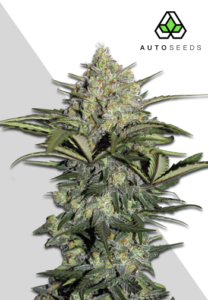
How to lollipop autoflowers
Autoflowers spend just 3-5 weeks in the vegetative stage before automatically flowering. Because of their short veg period, using high stress training techniques such as topping and fimming can be risky because it stresses the plant just as it’s about to start producing buds. However, there is one technique that can be used to great effect with autoflowers, and that’s lollipopping., This technique isn’t just about enhancing the aesthetic appeal of your plants; it’s a strategic move to boost their health and productivity. In essence, lollipopping involves removing lower levels of foliage that don’t receive much light, allowing the plant to focus its energy on the top buds.
What is lollipopping cannabis?
Lollipopping is a pruning technique where lower branches and leaves of a cannabis plant are removed. This process helps direct the plant’s energy to the upper segments of the plant, which receive more light. Essentially, by eliminating the less productive lower parts, the plant focuses its resources on developing hardy, high-quality buds at the top. This method is particularly beneficial for autoflowering strains, as it optimizes their growth and yield in a relatively short life cycle. Lollipopping ensures that the plant’s energy is not wasted on areas that don’t contribute a whole lot to the overall harvest.
What are the benefits of lollipopping?
Lollipopping offers several benefits for cannabis cultivation such as:
1. Enhanced light penetration: By removing lower leaves and branches that receive less light, lollipopping allows more light to reach the bud sites located on the upper parts of the plant, which are almost certain to produce quality buds.
2. Improved air circulation: Lolipopping helps increase air flow around the plant, reducing the risk of mold and mildew, which are common issues in dense foliage.
3. Energy efficiency: Lollipopping directs the plant’s energy towards the development of top buds, rather than wasting resources on lower growth that is less productive.
4. Better nutrient use: The plant uses its nutrients more effectively, as they are channeled to the upper, higher-yielding parts, potentially leading to larger, denser buds.
5. Ease of maintenance: A lollipopped plant is generally easier to manage and inspect for pests and diseases due to its more open structure.
6. Improved yield quality: While it may not always increase the quantity of the yield, lollipopping can significantly enhance the quality of the buds produced. Bigger doesn’t always mean better, but lollipopping can be seen as a form of pre-manicuring, meaning you’re more likely to have healthy, attractive plants if done correctly.
Can you lollipop autoflowers?
Yes, you can lollipop autoflowers as well. Although it requires careful timing and execution. Due to their shorter and predetermined life cycle, autoflowers are much more sensitive to stress. To get the best results from lollipopping autoflowers you need to get your timing right. Ideally you should start the process during the early flowering stage, but prune conservatively. The goal is to remove lower growth that doesn’t receive adequate light, redirecting the plant’s energy to the upper, more productive bud sites. This can lead to improved air circulation, better light penetration, and potentially enhanced yields, provided it’s done with precision and care to avoid overstressing the plants.
When to lollipop autoflowers?
The ideal time to lollipop autos is during their early flowering stage. This period typically begins about three to four weeks after germination. Its important that you don’t start too early, as autoflowers have a shorter vegetative growth phase and can be more sensitive to stress, which means they might not fully recover physically before going into the flowering stage. Lollipopping should be done before the plant fully enters the blooming phase to allow it to recover and direct its energy to developing buds. Timing is key; too late, and you risk stressing the plant during its crucial bud development phase, potentially impacting the yield and quality of the harvest.
How to lollipop autoflowers step-by-step
1. Prepare your tools: Make sure you have some sharp, sterilized pruning shears or scissors. Clean tools help prevent the spread of disease and ensure a clean cut.
2. Identify lower growth: Inspect your autoflowering plants and identify the lower branches and leaves, especially those receiving little to no light.
3. Prune away: Start pruning the identified lower growth. Make clean cuts close to the stem but be careful not to damage the main stalk.
4. Focus on the middle: After removing the obvious lower growth, look at the middle section the plant beneath the canopy. Thin out any small branches or leaves that are unlikely to receive enough light and develop properly.
5. Be conservative: With autoflowers, it’s important to be conservative in pruning. Because of their short vegetative stage, too much stress can impact their development and result in smaller yields and quality.
6. Monitor plant health: After pruning, monitor your plants closely. Look for signs of stress and ensure they have adequate water, nutrients, and light for recovery.
7. Clean up: Dispose of the pruned material or trimmings properly to keep your growing area nice and clean and to prevent any potential pest or disease issues.
The ‘One-Noding’ technique
The ‘One-Noding’ technique in cannabis cultivation is a selective pruning method. It involves identifying and keeping one strong node (or bud site) on each branch while removing the others. This technique is often used in conjunction with lollipopping. The goal is to concentrate the plant’s energy into fewer, but more robust, bud sites. By doing this, growers aim to improve the size and quality of the buds that develop. In autoflowering plants, where energy efficiency is crucial due to their short life cycle, ‘One-Noding’ can be particularly effective. It simplifies the plant’s focus, leading to potentially bigger yields and higher-quality harvests from the selected nodes.
How much does lollipopping increase yield?
The increase in yield from lollipopping can vary depending on several factors such as the strain of the plant, growing conditions, and your level of experience. Generally, lollipopping is more about enhancing the quality of the yield rather than significantly increasing its quantity.
By directing the plant’s energy to the top buds that receive the most light, lollipopping can lead to the development of denser, larger, and more potent buds. In some cases, growers may observe a 10-20% increase in the quality and size of upper buds. However, this does not necessarily translate into a 10-20% overall increase in yield by weight, as the technique involves removing a portion of the plant.
The primary aim of lollipopping is to produce a more efficient and higher-quality yield, rather than a substantial increase in the total weight of the harvest. The success of this method primarily depends on how well it is implemented, and the specific characteristics of the cannabis variety being grown (phenotype/genotype).
Should you lollipop autoflowers outdoors?
When you grow autoflowers outdoors, there are some things that are out of your control that you might want to take into consideration.
1. Climate and environment: In outdoor environments, lower branches may receive more light than indoors, making lollipopping less crucial. However, in dense planting areas or regions with less intense sunlight, lollipopping can still be beneficial.
2. Plant health and stress: Autoflowers can be quite sensitive to stress. Outdoor conditions can be more unpredictable, so careful consideration must be given to avoid overstressing the plants.
3. Pest and disease control: Removing lower growth can help in managing pests and diseases, as it improves air circulation and reduces moist, shaded areas where these problems thrive.
4. Space utilization: In limited space, lollipopping helps manage plant size and shape, making it easier to maintain and inspect the plants.
5. Grower’s preference: Some growers prefer a natural approach, letting the plant grow without intervention, while others aim for optimization of bud quality and may find lollipopping highly beneficial with a relatively small amount of effort.
The decision to lollipop autoflowers outdoors should be based on environmental conditions, the variety as well as the health of the plants, and the grower’s objectives and preferences. It’s not a one-size-fits-all solution and should be adapted to each specific growing situation, but the process can nonetheless be highly rewarding.
Conclusion
In conclusion, lollipopping your autoflowering plants can be a game-changer for bigger yields and better quality buds. Remember to start during early flowering, be gentle, and watch your plants thrive. With improved light penetration and air circulation, your plants will enjoy a more efficient grow. Give it a try on your next project and watch your cannabis plants reach new heights as well as shapes! Happy lollipopping!




